Manual retraction of hydraulic slide outs is a crucial backup for RVs, ensuring security and preventing damage during emergencies when the system fails, requiring physical effort and precise steps for safe execution.
1.1 Overview of Hydraulic Slide-Out Systems
Hydraulic slide-out systems are mechanisms used in RVs to extend and retract sections of the vehicle, such as living quarters or storage compartments. These systems rely on hydraulic fluid pressure to power actuators, which move the slide-outs smoothly in and out. Controlled by solenoid valves and electric pumps, they offer precise operation and stability. The system typically includes a hydraulic pump, reservoir, actuators, and control valves, working together to ensure smooth extension and retraction. While primarily electrically controlled, most systems include a manual override feature for emergencies. Widely used in motorhomes and travel trailers, hydraulic slide-outs enhance space optimization and comfort. Regular maintenance is essential to ensure optimal functionality and prevent leaks or mechanical failures.
1.2 Importance of Manual Retraction in Emergencies
Manual retraction is vital during emergencies when the hydraulic system fails, allowing RV owners to secure slide-outs and prevent damage. Power loss or system malfunctions can leave slides extended, exposing the RV to weather risks and potential collisions. Manual retraction ensures the vehicle remains stable and secure for travel or storage. It prevents costly repairs from environmental damage or mechanical stress. Knowing how to manually retract slide-outs is essential for RV safety and functionality, especially in remote areas with limited access to professional help. This backup method provides peace of mind, ensuring safety and control in critical situations, and is a crucial skill for all RV enthusiasts to master.
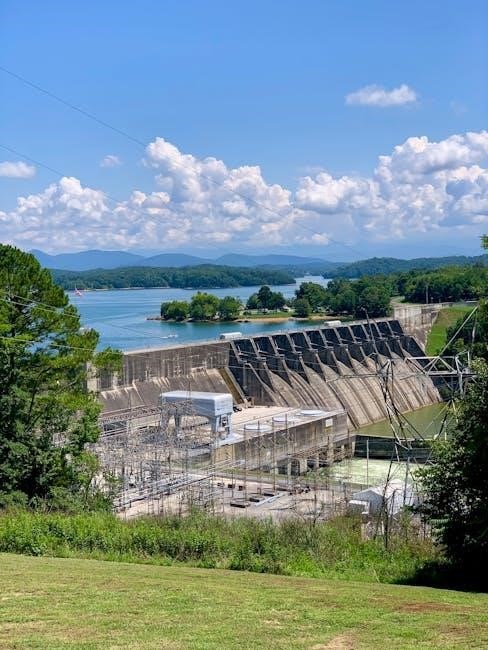
Tools and Materials Needed for Manual Retraction
A manual override crank tool, hydraulic fluid, and safety gear like gloves and safety glasses are essential for manually retracting hydraulic slide-outs safely and effectively always.
2.1 Manual Override Crank Tool
The manual override crank tool is essential for controlling the hydraulic actuator when the primary system fails. It connects directly to the extension rod of the electric actuator motor, allowing manual operation. This tool provides a mechanical advantage, enabling users to retract the slide-out by turning the crank handle clockwise. Properly securing the crank to the actuator ensures smooth operation. Always store the tool near the RV for easy access during emergencies. Regularly inspect the crank for damage or wear to ensure reliability. Using the correct size and type of crank is crucial for effective control, as specified in the RV manufacturer’s guidelines. This tool is indispensable for maintaining functionality and safety when hydraulic systems malfunction.
2.2 Hydraulic Fluid Check
Before attempting manual retraction, it’s crucial to check the hydraulic fluid level in the system. Low fluid levels can cause slow or incomplete slide-out movement and may lead to system failure. Locate the hydraulic fluid reservoir, typically near the pump or manifold. Use the dipstick to measure the fluid level, ensuring it meets the manufacturer’s recommended level. If the level is low, top it up with the specified hydraulic fluid type to avoid contamination. Clean the dipstick between checks to ensure accuracy. Regular fluid checks prevent system malfunctions and ensure smooth operation during manual retraction. Always refer to the RV’s manual for specific fluid requirements and reservoir location. Proper fluid maintenance is vital for reliable hydraulic function. Inspect the fluid for viscosity and signs of contamination, addressing any issues promptly to maintain system integrity. This step ensures the hydraulic system operates efficiently during manual retraction, reducing the risk of further complications. Consistent fluid checks are a cornerstone of hydraulic system care, ensuring optimal performance and longevity. Always handle hydraulic fluid with care, wearing protective gloves and eyewear to prevent accidents. If unsure about the process, consult a professional to avoid potential damage to the hydraulic components. Regular fluid maintenance not only prevents emergencies but also extends the lifespan of the slide-out system, ensuring years of reliable service. By staying proactive with fluid checks, you can address issues before they escalate, safeguarding your RV’s functionality and your safety on the road. This simple yet critical step is often overlooked but is essential for maintaining the hydraulic system’s health and efficiency. Always keep a spare bottle of the recommended hydraulic fluid on hand for quick top-offs when needed. Familiarize yourself with the reservoir’s location and the dipstick’s operation to make future checks quicker and more convenient. Remember, hydraulic fluid is the lifeblood of your RV’s slide-out system, and proper maintenance ensures it continues to function as intended. If you notice any unusual noises or erratic movement during operation, investigate immediately, as these could indicate low fluid levels or other underlying issues. Addressing these concerns early prevents costly repairs and ensures your RV remains in top condition. Regular hydraulic fluid checks are a simple yet effective way to maintain your RV’s slide-out system, providing peace of mind and reliable performance. By incorporating this step into your routine maintenance schedule, you can enjoy trouble-free operation and extend the life of your RV’s hydraulic components. Always prioritize hydraulic fluid checks to keep your slide-outs functioning smoothly and securely, ensuring your RV adventures remain enjoyable and stress-free. This proactive approach not only saves time and money but also enhances your overall RV experience by preventing unexpected breakdowns. Stay vigilant with fluid levels to keep your hydraulic system running like clockwork, and remember that consistent maintenance is key to longevity and reliability. If you’re unsure about any aspect of the process, don’t hesitate to seek guidance from a qualified RV technician to ensure everything is done correctly. Hydraulic fluid checks are a vital part of RV maintenance, and mastering this step will help you navigate any challenges with confidence and ease.
2.3 Safety Gear (Gloves, Safety Glasses)
Wearing proper safety gear is essential when manually retracting hydraulic slide outs. Gloves protect hands from cuts, abrasions, and hydraulic fluid exposure, while safety glasses shield eyes from debris. Ensure gloves are durable and provide a firm grip to prevent tools from slipping. Safety glasses with side shields offer comprehensive eye protection. Hydraulic fluid can cause skin irritation, making gloves crucial for preventing direct contact. Always wear this gear to minimize injury risks during the process. Proper safety equipment ensures a safer working environment, allowing you to focus on the task without compromising personal safety. This precautionary measure is vital for protecting yourself from potential hazards associated with manual retraction. By wearing gloves and safety glasses, you can confidently perform the procedure, knowing your hands and eyes are safeguarded. This step is a fundamental part of responsible RV maintenance, emphasizing safety above all else. Always prioritize personal protection to avoid accidents and ensure a smooth, incident-free manual retraction process. Proper safety gear is a simple yet effective way to enhance your safety while working with hydraulic systems, providing peace of mind and reducing the risk of injury. Remember, safety should never be compromised, and wearing gloves and safety glasses is a critical step in maintaining a safe working environment. This precaution ensures that you can complete the manual retraction process effectively and securely, protecting both yourself and your RV from potential harm. By taking these simple precautions, you can avoid common hazards and ensure a successful outcome. Always remember that safety gear is your first line of defense against accidents, and its use is non-negotiable when working with hydraulic systems. Stay protected and maintain a safe environment throughout the process. This approach not only safeguards your well-being but also promotes a culture of safety and responsibility in RV maintenance. Never underestimate the importance of proper safety gear when dealing with hydraulic systems, as it can mean the difference between a safe and successful procedure or a potentially dangerous situation. By prioritizing safety, you ensure that the manual retraction process is both effective and secure, allowing you to enjoy your RV adventures without unnecessary risks. Proper safety gear is an essential investment in your safety and the longevity of your RV’s hydraulic systems. Always wear gloves and safety glasses to protect yourself from the inherent risks of manual retraction, and encourage others to do the same. This simple yet crucial step can prevent serious injuries and ensure that your RV remains in excellent condition. Remember, safety is paramount, and wearing the right gear is the first step in maintaining a safe working environment. By doing so, you can tackle the manual retraction process with confidence and peace of mind, knowing you’ve taken every necessary precaution to protect yourself. This proactive approach to safety is essential for any RV owner looking to maintain their vehicle’s functionality and ensure their own well-being. Always stay vigilant and prioritize safety when working with hydraulic systems, as it is the cornerstone of responsible RV maintenance. Proper safety gear not only protects you from immediate hazards but also contributes to a safer overall experience, allowing you to enjoy your RV without unnecessary concerns. By making safety a top priority, you can confidently perform the manual retraction process and maintain your RV’s hydraulic slide outs with ease and security. This emphasis on safety gear underscores the importance of being prepared and responsible when dealing with complex systems like hydraulic slide outs. Always remember that your safety is worth the extra effort, and wearing gloves and safety glasses is a small price to pay for peace of mind. By taking these precautions, you can ensure that the manual retraction process is both safe and successful, safeguarding both yourself and your RV. This commitment to safety is a vital part of responsible RV ownership and maintenance, ensuring that you can continue to enjoy your adventures without incident. Proper safety gear is an indispensable tool in your RV maintenance arsenal, providing the protection you need to tackle challenging tasks like manual retraction with confidence. Always wear gloves and safety glasses to create a safer working environment, and never compromise on safety when working with hydraulic systems. This approach not only protects you from harm but also ensures that your RV remains in optimal condition, ready for your next adventure. By prioritizing safety, you can perform the manual retraction process effectively and securely, knowing that you’ve taken every necessary precaution to protect yourself and your RV. This dedication to safety is essential for any RV owner looking to maintain their vehicle’s functionality and ensure their own well-being. Always stay proactive and prioritize safety when working with hydraulic systems, as it is the foundation of responsible RV maintenance. Proper safety gear not only enhances your safety but also contributes to a more efficient and stress-free manual retraction process. By wearing gloves and safety glasses, you can focus on the task at hand, knowing that you’re protected from potential hazards. This simple yet effective measure ensures that you can complete the process without unnecessary risks, safeguarding both yourself and your RV. Remember, safety is always worth the extra effort, and wearing the right gear is a crucial part of maintaining a safe working environment. By taking these precautions, you can confidently perform the manual retraction process and enjoy your RV adventures with peace of mind. This emphasis on safety underscores the importance of being prepared and responsible when dealing with complex systems like hydraulic slide outs. Always prioritize your safety and the integrity of your RV by wearing proper safety gear during manual retraction. This proactive approach ensures that you can complete the process securely and effectively, without compromising your well-being or the functionality of your RV. By making safety a top priority, you can tackle the challenges of manual retraction with confidence, knowing that you’ve taken every necessary precaution to protect yourself and your vehicle. This commitment to safety is a vital part of responsible RV ownership, ensuring that you can continue to enjoy your adventures without incident. Proper safety gear is an essential investment in your safety and the longevity of your RV’s hydraulic systems. Always wear gloves and safety glasses to protect yourself from the inherent risks of manual retraction, and encourage others to do the same. This simple yet crucial step can prevent serious injuries and ensure that your RV remains in excellent condition. Remember, safety is paramount, and wearing the right gear is the first step in maintaining a safe working environment. By doing so, you can tackle the manual retraction process with confidence and peace of mind, knowing you’ve taken every necessary precaution to protect yourself. This proactive approach to safety is essential for any RV owner looking to maintain their vehicle’s functionality and ensure their own well-being. Always stay vigilant and prioritize safety when working with hydraulic systems, as it is the cornerstone of responsible RV maintenance. Proper safety gear not only protects you from immediate hazards but also contributes to a safer overall experience, allowing you to enjoy your RV without unnecessary concerns. By making safety a top priority, you can confidently perform the manual retraction process and maintain your RV’s hydraulic slide outs with ease and security. This emphasis on safety gear underscores the importance of being prepared and responsible when dealing with complex systems like hydraulic slide outs. Always remember that your safety is worth the extra effort, and wearing gloves and safety glasses is a small price to pay for peace of mind. By taking these precautions, you can ensure that the manual retraction process is both safe and successful, safeguarding both yourself and your RV. This commitment to safety is a vital part of responsible RV ownership and maintenance, ensuring that you can continue to enjoy your adventures without incident.
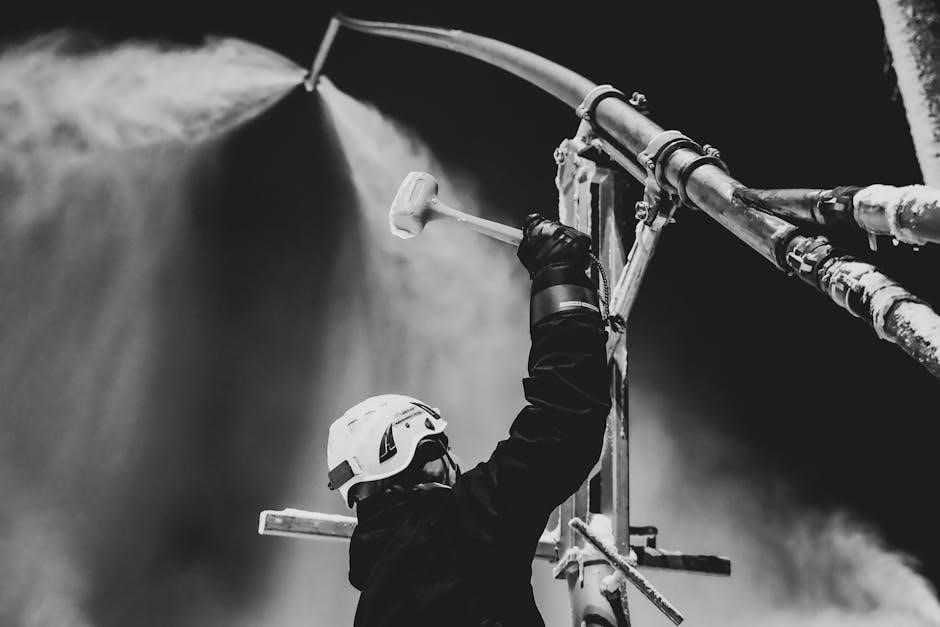
Preparation Steps Before Manual Retraction
Before manually retracting, ensure the RV is stable, disconnect power sources, locate the actuator and manifold valves, and clear the surrounding area for safe operation.
3.1 Disconnecting the Power Source
Disconnecting the power source is essential to ensure safety during manual retraction. Locate the battery and switch it off to prevent any accidental motor activation. Unhook the battery connectors to disable the hydraulic system completely. This step prevents electrical hazards and ensures the slide-out mechanism does not engage unexpectedly. After disconnecting, verify that all power sources are off and the system is dormant. This precaution protects both the operator and the RV from potential damage or injury during the manual process. Always double-check that no power is flowing to the hydraulic system before proceeding with any manual adjustments or retraction attempts.
3.2 Locating the Hydraulic Actuator and Manifold Valves
Locating the hydraulic actuator and manifold valves is critical for manual retraction. These components are typically found near the slide-out mechanism or under the RV. The actuator is usually attached to the slide-out and connected to the hydraulic system, while the manifold valves control fluid flow. Refer to your RV’s owner’s manual for specific locations, as designs may vary. Look for metal components with hoses or lines connected to them. Once identified, ensure they are accessible for operation. Proper identification of these parts is essential to safely and effectively perform the manual retraction process without causing damage to the system.
3.3 Ensuring the Area is Clear and Safe
Ensuring the area is clear and safe is vital before manually retracting hydraulic slide outs. Start by removing any obstructions or furniture near the slide-out to prevent damage or tripping hazards. Ensure no one is standing near the slide-out or in its path. Secure pets or children to avoid accidents. Wear safety gear, such as gloves and safety glasses, to protect yourself from potential debris or fluid leaks. Double-check that the RV is stable and level to prevent shifting during the process. Finally, inspect the area for any signs of hydraulic fluid leaks or system damage. A clear and safe environment is essential for a smooth and incident-free manual retraction process.
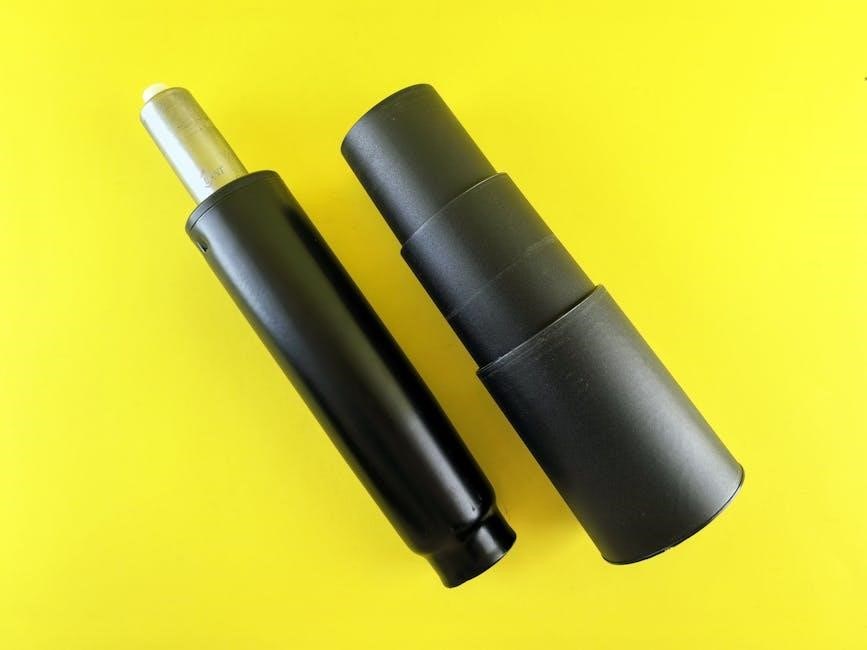
The Manual Retraction Process
Manually retracting hydraulic slide outs involves opening manifold valves, attaching the crank tool, and turning it clockwise while physically pushing the slide in, ensuring smooth operation and safety.
4.1 Opening the Manifold Valves
To begin the manual retraction process, locate the manifold valves connected to the hydraulic system. These valves control the flow of hydraulic fluid to the slide-out mechanism. Ensure the power source is disconnected and the system is depressurized before proceeding. Turn the valves counterclockwise to open them, allowing hydraulic fluid to flow freely. This step is critical as it enables manual control over the slide-out movement. Be cautious, as improper handling can lead to system damage or fluid leakage. Always refer to the manufacturer’s instructions for specific valve locations and configurations. Opening the manifold valves is the first physical step in manually retracting the slide-out, ensuring the mechanism can be operated safely and effectively.
4.2 Attaching the Manual Override Crank
Once the manifold valves are open, locate the manual override crank tool. This tool is specifically designed to connect to the hydraulic actuator rod, allowing manual control of the slide-out mechanism. Align the crank’s connector with the actuator rod’s receptacle and secure it firmly. Ensure the connection is tight to prevent slippage during the retraction process. If the crank does not fit easily, check for proper alignment or consult the manufacturer’s instructions. With the crank securely attached, you are ready to proceed with manually retracting the slide-out. Proper attachment is crucial for effective control and safety during the manual retraction process.
4.3 Physically Pushing the Slide-In
After attaching the manual override crank, the next step involves physically pushing the slide-out inward. This requires aligning your body with the slide-out and applying steady, consistent pressure. Ensure the slide-out is properly aligned with the RV wall to avoid jamming or uneven retraction. Depending on the size and weight of the slide-out, this step may require significant physical effort. It’s essential to push straight and avoid applying force at an angle, as this could damage the mechanism or surrounding structures. If resistance is too strong, stop and check for obstructions or misalignment before continuing. Safety and precision are critical during this phase.
4.4 Turning the Crank Handle Clockwise
Once the manual override crank is securely attached, begin turning the crank handle clockwise. This action engages the hydraulic system’s gears, gradually retracting the slide-out. Continue turning until you feel resistance, indicating the slide-out is nearly flush with the RV wall. Stop immediately when the slide-out is fully retracted to avoid over-tightening or damaging the mechanism. Ensure the slide-out is properly aligned with the RV wall during this process. If the crank becomes difficult to turn or the slide-out moves unevenly, inspect for obstructions or misalignment. Always maintain control of the crank to prevent sudden movements, ensuring a smooth and safe retraction process. This step requires patience and steady effort to achieve proper alignment and security.
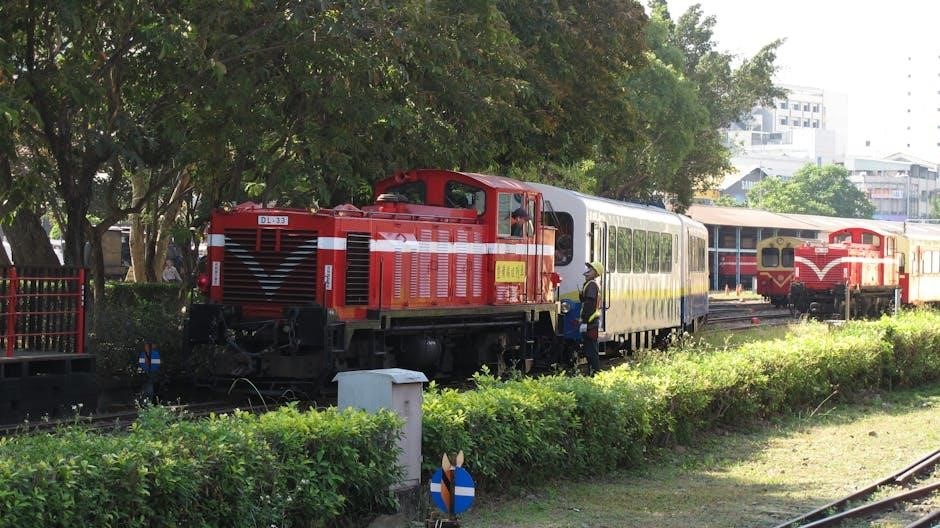
Post-Retraction Procedures
After manual retraction, inspect the system for hydraulic leaks, reattach the brake assembly, and reconnect the power source to ensure the slide-out is secure and functional for travel.
5.1 Inspecting for Hydraulic Leaks
After manually retracting the slide-out, inspect the hydraulic system for any signs of leaks. Check hoses, fittings, and connections for damage or fluid seepage. Use a clean cloth to wipe down surfaces and visually confirm integrity. If a leak is detected, tighten loose connections or replace damaged components immediately. Additionally, inspect the hydraulic fluid reservoir to ensure levels are adequate, as low fluid can indicate a breach in the system. Addressing leaks promptly prevents further damage and ensures the slide-out operates smoothly in the future. Regular inspections are essential for maintaining hydraulic system reliability and safety.
5.2 Reattaching the Brake Assembly
After retracting the slide-out, reattach the brake assembly to ensure stability and safety. Locate the saved screws and align the brake mechanism with its mounting points. Secure the assembly by tightening the screws evenly to avoid misalignment. Double-check that the brake engages properly to prevent unintended movement. Test the slide-out’s stability by gently pulling it to confirm the brake holds firmly. Properly reattaching the brake assembly is crucial for safe travel and preventing damage. Ensure all connections are tight and functional before finalizing the process. This step ensures the slide-out remains secure and ready for transportation; Always verify the brake’s effectiveness to guarantee reliability.

5.3 Reconnecting the Power Source
Once the slide-out is fully retracted and the brake assembly is secure, reconnect the power source to restore normal operation. Ensure the slide-out is completely flush with the RV wall and no resistance remains. Turn the crank handle clockwise until it stops to confirm the slide-out is fully retracted. Reconnect the battery or power supply, then test the hydraulic system by extending and retracting the slide-out slightly to check for proper function. Verify that all hydraulic lines and connections are secure and free from leaks. This step ensures the system is ready for normal operation and prevents future malfunctions. Always double-check the hydraulic fluid level before restoring power.

Troubleshooting Common Issues
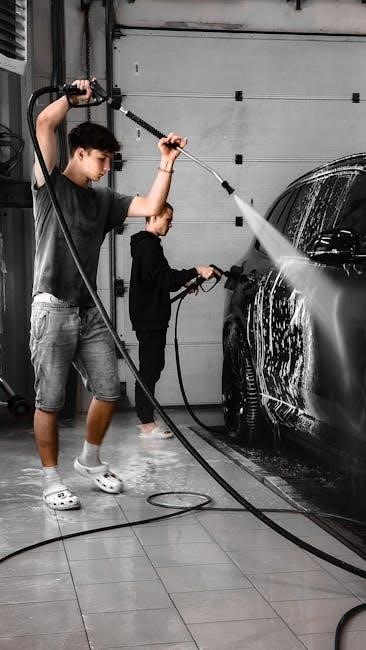
Common issues during manual retraction include low hydraulic fluid levels, stuck mechanisms, and malfunctioning tools. Always inspect the system for leaks or blockages before proceeding with repairs.
6.1 Low Hydraulic Fluid Levels
Low hydraulic fluid levels are a common issue that can hinder manual retraction. Insufficient fluid reduces system pressure, making slide-outs slow or non-responsive. Always check the reservoir before starting. If levels are low, refill with the recommended fluid type to avoid contamination. Overfilling can also cause malfunctions, so ensure the level matches manufacturer guidelines. Regular fluid checks prevent such issues; If symptoms persist after refilling, inspect for leaks or damaged hoses that may drain fluid. Addressing low fluid levels promptly ensures smooth operation and prevents further system damage during manual retraction processes.
6.2 Stuck or Jammed Slide-Out Mechanisms
Stuck or jammed slide-out mechanisms can complicate manual retraction, often due to debris, misalignment, or worn parts. Apply penetrating oil to moving components and gently wiggle the slide to dislodge obstructions. Avoid force to prevent damage. If the issue persists, inspect the track and rollers for buildup or wear. Clean or replace faulty parts as needed. Lubricate all moving parts to ensure smooth operation. If the mechanism is severely stuck, consult a professional to avoid further damage. Regular maintenance can prevent such jams, ensuring easier manual retraction when needed, and keeping your RV functional for extended periods without unexpected disruptions in service.
6.3 Malfunctioning Manual Override Tools
Malfunctioning manual override tools can hinder the retraction process, often due to wear, improper maintenance, or damage. Inspect the crank handle and connections for damage or corrosion. Ensure the hydraulic system has adequate fluid levels and check for leaks in hoses and fittings. Apply lubrication to moving parts if sticking occurs. If the tool fails, consider replacing it to maintain reliability. Regular maintenance, such as lubricating moving parts and inspecting hydraulic components, can prevent such issues. Always ensure safety by wearing gloves and safety glasses when handling malfunctioning tools. Addressing these problems promptly ensures smooth operation and prevents further complications during manual retraction.
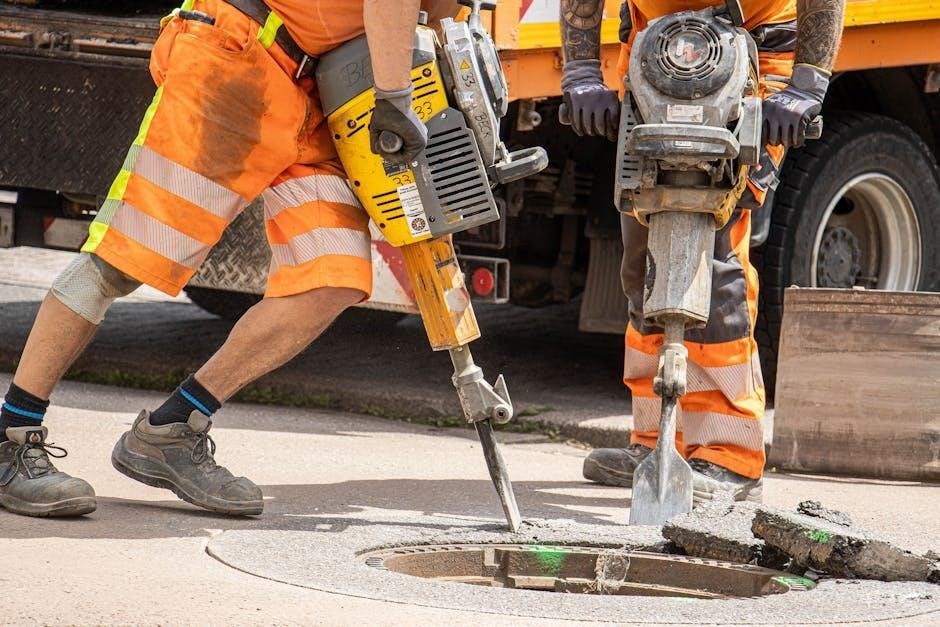
Maintenance Tips for Hydraulic Systems
Regular hydraulic fluid checks, lubricating moving parts, and inspecting hoses and fittings are essential for maintaining smooth operation and preventing system failures over time.
7.1 Regular Hydraulic Fluid Checks
Regular hydraulic fluid checks are vital to ensure optimal performance and prevent system failure. Always inspect fluid levels before and after operation, topping off as needed. Contaminated or low fluid can cause slow or erratic slide-out movement. Use a dipstick to measure levels, and look for signs of dirt or water in the fluid. If contamination is found, drain and replace the fluid immediately. Additionally, check for leaks around hoses and fittings, as hydraulic fluid loss can lead to system malfunction. Replace filters every 500 operating hours or as recommended by the manufacturer. Consistent fluid maintenance ensures smooth slide-out operation and reduces long-term repair costs, making it a cornerstone of RV hydraulic system care.
7.2 Lubricating Moving Parts
Lubricating moving parts is essential for maintaining smooth operation of hydraulic slide-out systems. Regularly apply high-quality, marine-grade or silicone-based lubricants to hinges, gears, and pivot points. This prevents corrosion and wear, ensuring parts move freely. Inspect and lubricate every 3 to 6 months, or after exposure to harsh weather. Use a clean cloth to wipe off old lubricant before applying new layers. Proper lubrication reduces friction, preventing overheating and premature wear. Neglecting this step can lead to increased resistance, making manual retraction more difficult and potentially causing system failure. Consistent lubrication ensures longevity and reliability of your RV’s hydraulic components, keeping them functioning smoothly for years to come. Regular maintenance pays off in performance and durability, safeguarding your investment in the hydraulic system.
7.3 Inspecting Hydraulic Hoses and Fittings
Inspecting hydraulic hoses and fittings is vital for maintaining system integrity. Check hoses for signs of wear, cracking, or abrasion, and ensure all connections are secure. Look for leaks around fittings and replace any damaged or corroded components immediately. Use a torque wrench to verify that all connections are tightened to the manufacturer’s specifications. Inspections should occur before and after each use, as well as during routine maintenance. Neglecting this step can lead to system failure, making manual retraction more challenging. Replacing worn parts early prevents costly repairs and ensures reliable operation of your RV’s hydraulic slide-out system, keeping it safe and functional for years to come. Regular inspections are key to avoiding unexpected issues during travel or setup.

Safety Precautions
Always wear safety gear, ensure the RV is stable, and clear the area before starting. Avoid overexertion and be cautious of hydraulic pressure to prevent accidents during manual retraction.
8.1 Ensuring Stability Before Retraction
Ensuring stability is critical before manually retracting hydraulic slide outs. Always level the RV and engage stabilizing devices like jack stands or wheel chocks to prevent movement during retraction. Secure the RV to avoid shifting, which could disrupt the process or cause injury. Clear the surrounding area of obstacles and ensure no one is near the slide-out. Proper stabilization ensures the RV remains stationary, allowing for safe and controlled manual retraction. This step is essential to prevent accidents and maintain control over the hydraulic system during the retraction process. Always double-check the RV’s stability before proceeding with manual operations.
8.2 Avoiding Overexertion During Manual Retraction
Avoiding overexertion is vital during manual retraction of hydraulic slide outs. Use proper tools like a manual override crank to minimize physical strain. If the slide is difficult to move, do not force it, as this can cause injury or damage. Take regular breaks and consider enlisting assistance if the task is too strenuous. Ensure the process is done slowly and methodically to maintain control and prevent accidents. Overexertion can lead to fatigue, increasing the risk of errors or harm. Prioritize your safety and the integrity of the hydraulic system by working efficiently without excessive force.
8.3 Monitoring for Hydraulic System Leaks
Monitoring for hydraulic system leaks is essential during manual retraction to prevent fluid loss and system damage; Inspect hoses, fittings, and seals for any signs of leakage. Use a barrier or absorbent material to contain spills. Check hydraulic fluid levels regularly, as low levels can indicate leaks. Address any issues promptly to avoid further damage. Regular inspections and maintenance can help identify potential leaks early. Always ensure the system is free from leaks before operating to maintain safety and functionality. Neglecting leaks can lead to system failure, making manual retraction more challenging and potentially dangerous.